Starting a freelance web design or development business isn’t easy.
When you worked full time, you focused on your craft; now you have to worry about everything. Suddenly, you have to balance the books, manage contracts, and take care of all the little things somebody else used to do for you. Those first few months can feel pretty overwhelming.
Perhaps the biggest challenge with freelancing is finding new clients and selling your work. If you’ve never done it before, sales can be incredibly intimidating. But it doesn’t have to be.
In this guide, we’ll show you a simple process for landing web design and development clients.
Let’s dive in!
1. Build a Foundation (Improve Online Presence)
Before starting client outreach, it’s important to build an online presence that demonstrates your skills, shows off your best work, and engenders trust.
Clients will look at your online footprint when evaluating whether to hire you, so making a good impression is key. At a minimum, we recommend the following steps:
Purchase a Domain and Set up an Email Account
By sending emails from your own domain name, you demonstrate legitimacy to prospective clients.
Your first step should be registering a domain name that appropriately showcases your business. We recommend picking something simple; when in doubt, use your name or a combination of your name and keywords like “design”, “code”, or “studio”, and check out our guide on How to Choose a Domain Name. If possible, get a .com or .org domain.
Build a Portfolio Site
Your next step is building a portfolio site. You’ll use this site to showcase your work.
Your site can be simple to start out. Select a few of your favorite projects, ideally projects where you were able to provide significant value. If you don’t have prior work experience, demo projects are okay, too. WordPress is perfect for this, but you can use any of the website builder tools as well.
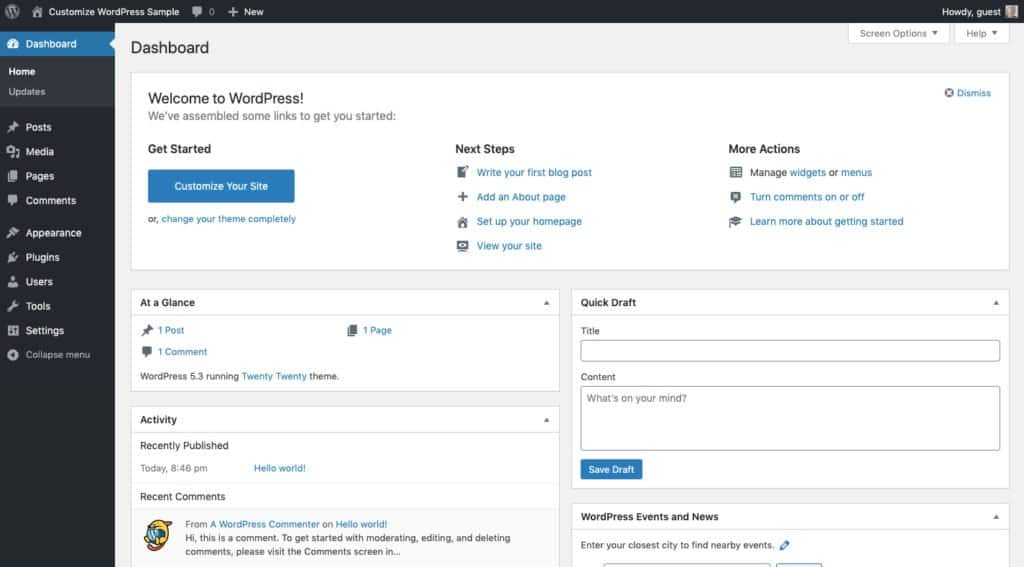
Clients are looking for designers and developers who demonstrate critical thinking and creative problem-solving and who put the goals of the business above aesthetics. So make sure to show your work when describing each project. We recommend covering the project’s background and business goals, your role on the team, your approach to the problem, and the results of your work.
Polish Your Social Media Profiles
As a final step, it’s important to polish your LinkedIn, Twitter, and Facebook profiles.
We suggest adding a link to your business website on each account, and writing a clear and brief summary of your services on LinkedIn. Certainly, ensure none of your accounts show anything that clients might consider inappropriate or offensive.
2. Find Prospective Clients (Get Listed and Start Contacting)
Now that you’ve built a solid online presence, it’s time to build a pipeline of prospective clients.
There are many ways to find prospective clients, but some are more effective than others. Here are the most common channels, and how to make the most of each.
Freelance Marketplaces
Freelance marketplaces like UpWork and Freelancer.com are incredibly popular. Every day, thousands of companies use these sites to find and hire freelancers.
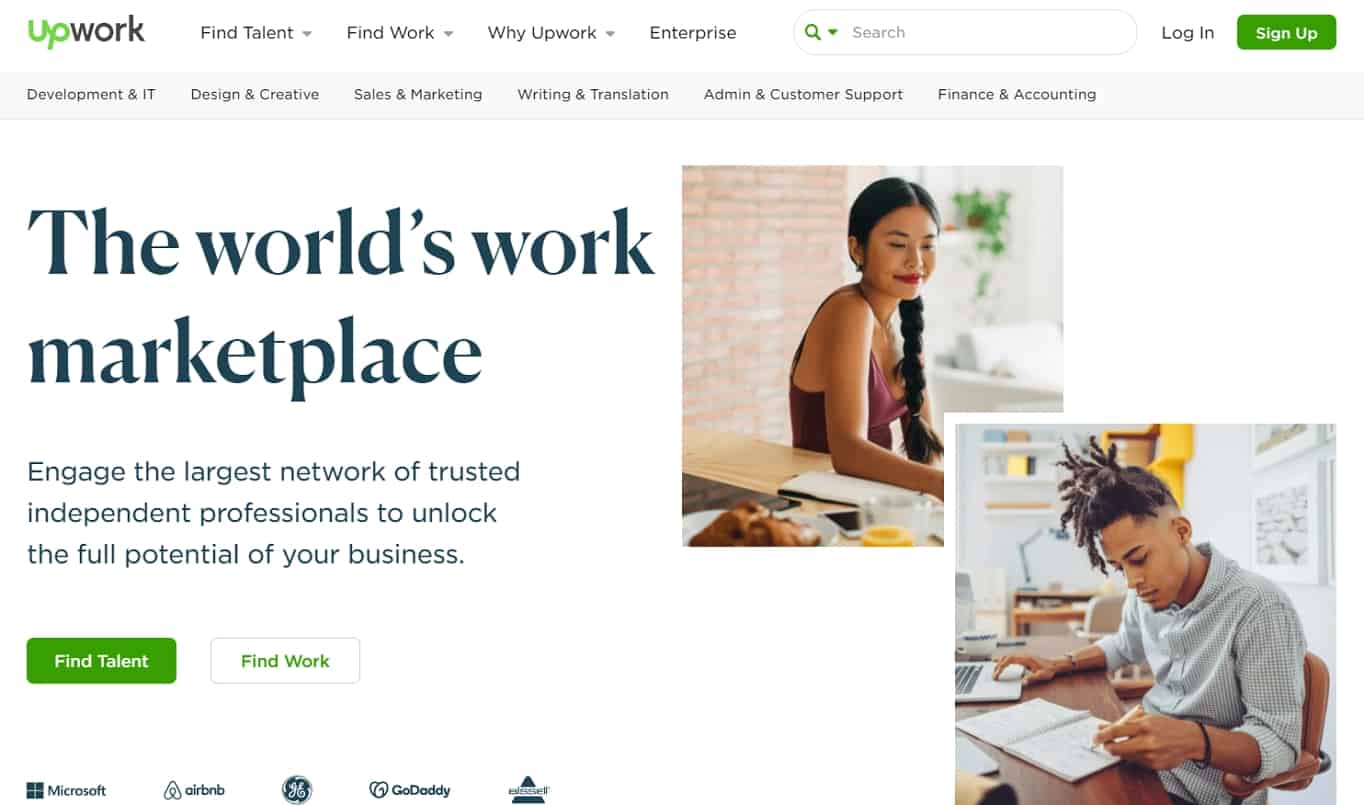 That said, these marketplaces are also extremely competitive. If you choose to use these marketplaces, you’ll be competing mostly on price. Remember, it’s a numbers game. When you first start out, expect to win less than 5% of the projects you propose.
That said, these marketplaces are also extremely competitive. If you choose to use these marketplaces, you’ll be competing mostly on price. Remember, it’s a numbers game. When you first start out, expect to win less than 5% of the projects you propose.
Cold Contacting
Cold contacting isn’t glamorous, but if done correctly it can be incredibly effective, particularly if you’ve chosen a specific niche. For example, if you build websites for local restaurants, reaching out to prospective clients methodically on LinkedIn is a great way to drum up business.
As with any outreach, be sure to be positive, polite, and persistent while avoiding crossing the line into becoming a nuisance. If your prospect hasn’t responded after 3-5 messages, they’re likely not interested and it’s time to move on.
Job Boards
Many job boards list freelance opportunities in addition to full-time work. If you use job boards, expect to go through a similar application process to that of a full-time job.
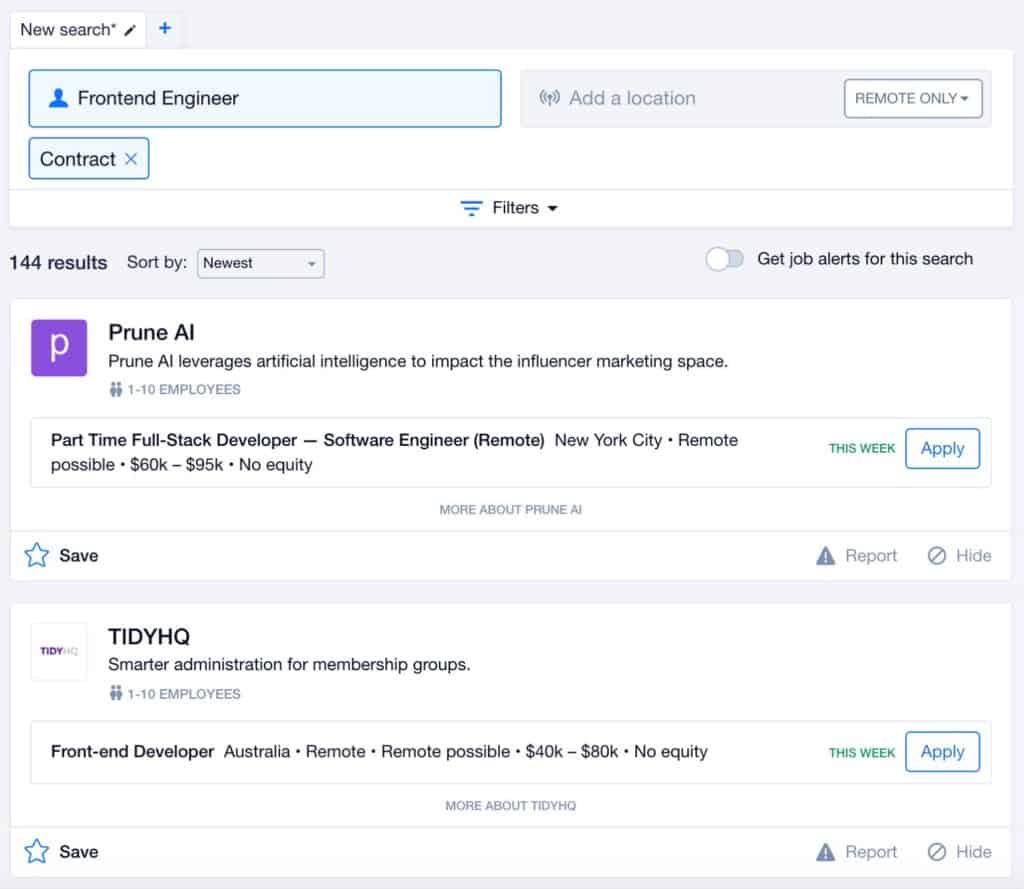
AngelList and We Work Remotely are popular job boards that frequently have freelance design and development opportunities.
Social Media
Social media is an extremely underrated medium for finding freelance roles, especially since you can use it as both an inbound and outbound channel.
To start off, write posts about your new freelance business on LinkedIn, Twitter, and Facebook. Keep your posts simple; announce your business and the services you offer, and let people know how to contact you.
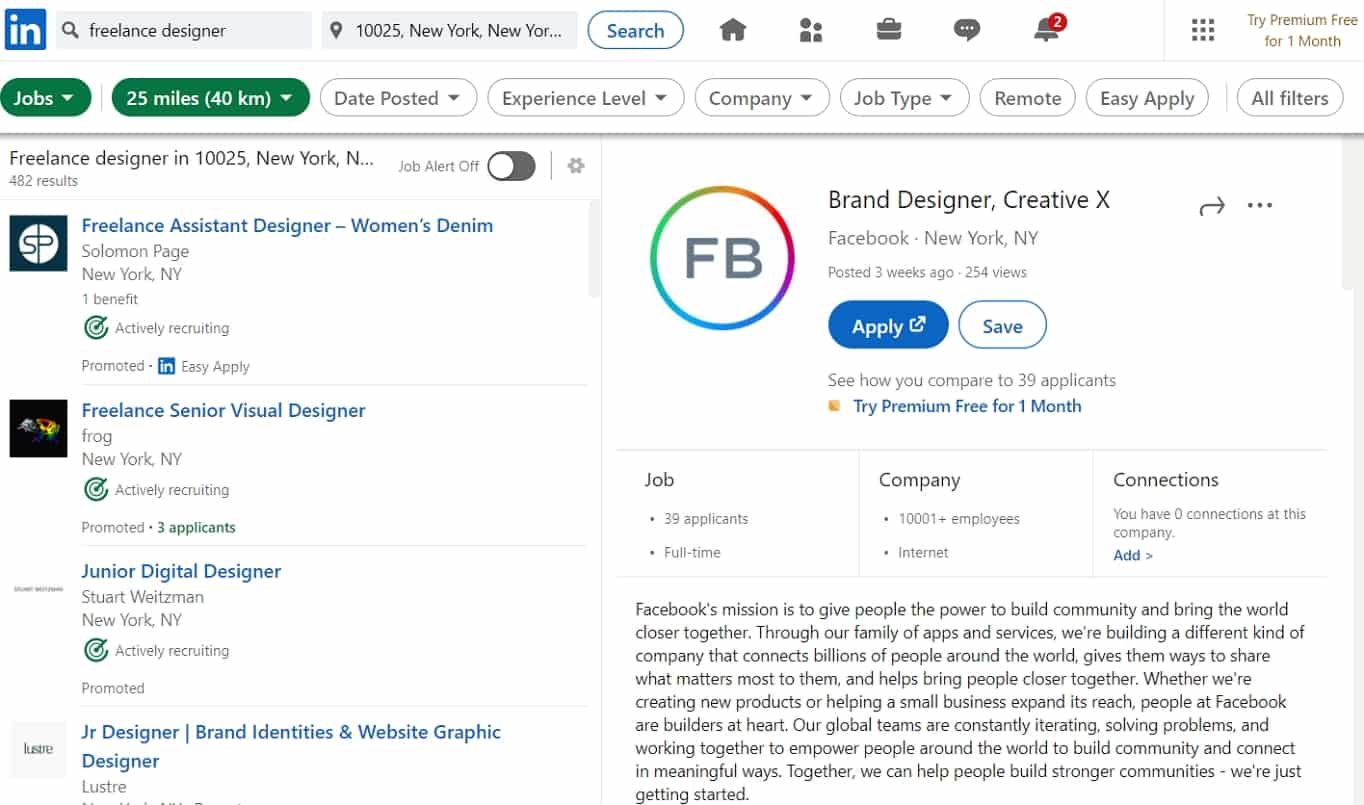 You can also use social media as an outbound channel by searching for people who need your services and contacting them directly. For example, searching Twitter for “freelance designer” yields thousands of opportunities posted in the past day alone.
You can also use social media as an outbound channel by searching for people who need your services and contacting them directly. For example, searching Twitter for “freelance designer” yields thousands of opportunities posted in the past day alone.
Your Network
Don’t forget about your network! Even if you don’t think you know any prospective clients, you’d be surprised how useful your network can be.
Reach out to former colleagues, friends, and family to let them know about your new business and ask if they know anybody you should contact. Also, ask if they know freelancers who offer complementary services; for example, if you’re a designer, ask about developers and marketers. These freelancers often get requests for the type of work you do, so building relationships with them can be a fantastic source of work.
Professional Groups
Professional groups are another fantastic source of freelance leads. Look for freelance groups—both in your own field and complementary fields—as well as any industry or niche groups where your prospective clients hang out. Public Slack Groups and local meetups can be great places to network and companies looking for freelance help are frequently members.
Agency Subcontracting
Large agencies frequently get requests from clients who are too small for them. Building a relationship with one of these agencies is a fantastic source of new leads. Look for agencies in your network and reach out to schedule coffee. Ask about overflow work and anyways you can be helpful.
Content Marketing & Open Source Work
Content marketing and open source work are great ways to demonstrate your skills to prospective clients. That said, these channels take time, so it’s only worth investing in them if you’re actually interested in the work itself and willing to be patient.
3. Start Reaching Out
Once you’ve identified prospective clients, you’ll need to make contact. Whether you reach out over email, LinkedIn, or another medium, you’ll want to structure your message so it’s most likely to get a response.
The best outreach messages share a few things in common:
- Good Outreach is Personalized
Nobody likes getting form letters. So when you reach out to clients, make sure your communications don’t feel canned.
Yes, it’s okay to reuse a few common lines, but take the time to personalize your message to your prospective client’s business.
- Good Outreach is Brief
People are busy. Introduce yourself, explain why you think you could help their business in specific terms, and make the ask. Three to four sentences is plenty.
- Good Outreach Leverages Social Proof
As soon as you can, incorporate social proof—in the form of customer names or testimonials—into your outreach. Prospects are more likely to respond when they feel comfortable that they’re talking to somebody who’s worked with clients like them.
- Good Outreach is Direct
Close your message with a direct asks for a follow-up conversation. Make the next step clear and easy to take. “Do you have 15 minutes later this week to discuss this opportunity?” is simple and effective.
4. Qualify Your Leads
Not all clients are created equal. Some become profitable customers, others never close, and others still bleed you dry, constantly trying to change the scope of a project, extend the timeline, or delay payment.
To maximize profitability and reduce future headaches, it’s important to qualify your prospects upfront. In your first conversation, you want to learn a few key pieces of information.
What Are Their Business Goals?
During the course of your initial conversations, your client will likely focus on the nitty-gritty of their particular project. Maybe they want you to design a webpage or build a Shopify theme. Whatever the case, they’re likely to focus on features.
It’s natural to start off by asking questions about the various requirements they outline. What functionality do they need? What should the navigation look like?
Resist this temptation.
While it’s important to understand the project scope, you need to understand the motivation behind the project first. Do they want to increase sales? Are they hoping to lower operational costs? By how much?
This information is one of the keys to crafting a successful proposal, and it will also help inform your discussion around scope and features. If a client’s underlying goal is increasing sales, any features that don’t drive sales are unlikely to motivate them.
Just as important, clients whose motivations are vague are typically the ones who change scope frequently, focus on price over quality, and are generally painful to work with. If a client can’t clearly articulate or quantify their business goals, it may be best to turn down the project.
What Are the Client’s Key Business Metrics?
Once you understand the client’s goals, it’s important to dive into the nuance.
If a client wants you to redesign their website to increase sales, then gaining an understanding of the metrics that drive those sales—the average value of a sale is today, the website’s current conversion rate, how many visitors the site gets per month—is crucial.
By asking for these details upfront, you demonstrate to the client that you’re focused on business outcomes, not just aesthetics, and you can valuable information that will help you craft a compelling pitch.
What’s the Timeline?
Just because a client seems excited about something doesn’t mean they’re ready to buy.
Qualify your leads by asking them what their timeline is. If they’re not planning to get started within the next few weeks, adjust your expectations—and the effort you put in—accordingly. Some of these clients will close eventually, others are merely window shopping.
Who’s the Decision Maker?
Frequently the person you meet first isn’t the person who can actually write you a check. It’s best to know upfront who has the final decision-making authority so you can get their input and feedback early. Be wary of situations where there’s no clear decision-maker or where you’re forced to work with a proxy.
Can They Afford You?
Putting together a proposal takes time and effort. Don’t waste it by guessing on price. Instead, try to gauge the budget upfront.
You can do this in a few different ways, but the best option is usually to ask directly. Try something like:
I’ve seen projects like this go for as little as $2,000 and I’ve seen them go for as much as $20,000. It really depends on the features you’re looking for and the underlying value they drive for your business. Do you have a sense of what your budget is so I can tailor my proposal accordingly?
Some clients are understandably wary of volunteering this information; they think that by sharing their budget with you they give up negotiating leverage.
If you encounter this concern, simply explain again that you can tailor the project to their needs by expanding or narrowing the scope, but that the last thing you want to do is craft a proposal that won’t work for budgetary reasons. Typically you’ll at least get a range that you can workaround.
5. Perfect Your Pitch
You’re obsessed with your craft, and rightly so. But your client cares about their business. They want more than just a beautiful website, a well-designed app, or a well-coded project.
Writing a perfect pitch means speaking to their business needs, so the best pitches follow a simple structure that puts the client’s needs, rather than the project scope, first:
Describe the Pain
The pain is why your client is here today. Describe the business challenge they’re facing, how it’s hurting their business, and why it needs to be fixed.
For example:
Acme’s widget business is growing rapidly, and the company needs a modern sales platform to handle this demand. The current Acme website has a variety of design and performance issues that cause Acme to lose sales to competitors. Currently, Acme’s conversion rate is less than half of the industry average. The website also creates a number of operational headaches related to collecting key information for customer orders, forcing Acme operations staff to double-check each order manually which results in over 400 man-hours of lost productivity per month.
This section reminds your prospect of the business problem they’re facing and demonstrates that you understand how important solving that challenge is.
Describe the Dream
The dream is where your client wants to be; it’s the future state where their pain is fixed and everything is working well. Describe the future state of the business using the metrics you gathered during the qualification stage:
Acme is considering redesigning its website in hopes of addressing these issues and increasing sales. Since the average lifetime value of an Acme customer is over $500, even a small increase in conversion rate of 10% would be worth over $250,000 per month to the company. By streamlining data collection, the new website can entirely eliminate the productivity issues associated with double-checking orders, allowing the sales staff to focus on its largest and most important customers.
Describing the future state of the business further reinforces that you understand the real reason for the project. By describing that future in monetary terms, you ensure you have your prospect’s attention.
Describe the Fix
The fix is the meat of the project. It’s the features you’ll create and the solution you’ll deliver. Describe both the key deliverables and the methodology you’ll take to ensure that those deliverables generate the success your client needs.
With the end goal of helping Acme increase sales and reduce operational overhead, I propose the following activities…
Explain Your Fit
This section is key. Explain why you’re the best fit for this project, using examples of past work, customer testimonials, or anything else you can think of. You want your prospect thinking, “wow, we have to get this guy!”
Over my career, I’ve worked on hundreds of web design and marketing projects like this one; current and former clients include Apple, Microsoft, and Netflix…
Make the Ask
In the final section, outline pricing and timeline and ask for the sale. If you have multiple project options, explain each in detail.
Based on the details above, I’ve put together three options for your consideration…
By following this structure, you can create a compelling proposal that significantly increases your odds of winning your client’s business.
6. Close the Deal
You’ve sent your proposal, but don’t expect your deal to close immediately. There are a few steps you’ll need to take to move your sale across the finish line.
When and How to Follow Up
If your client doesn’t respond within three to four days of receiving your proposal, it’s okay to follow up. Offer to speak on the phone to answer any questions or discuss scope. If you can say so credibly, mention that your schedule is filling up with other projects and you want to ensure you reserve a slot for them.
This usually gets a response within a day or two, but if you still haven’t heard back after another 3-5 days, reach out again. You’ll almost always hear back one way or another at this point.
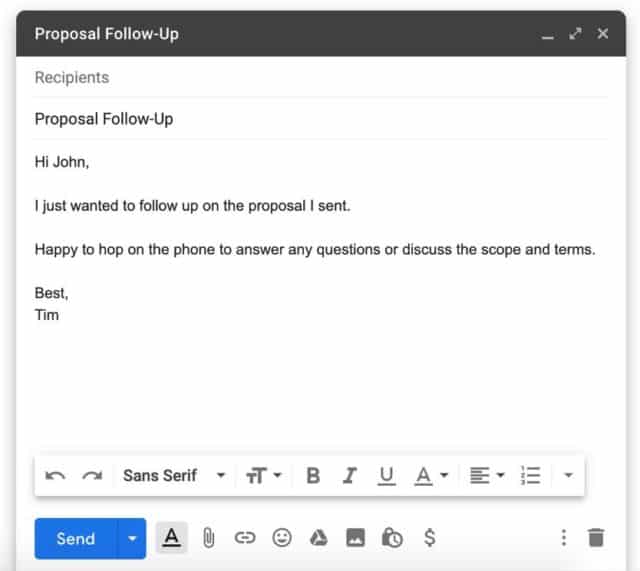
Handling Negotiation and Pushback
Some clients like to negotiate, so it’s best to be prepared.
In general, we recommend negotiating on scope first. If a client wants you to reduce your fee, have a few features or pieces of work you can eliminate from the project to accommodate this request.
As a last resort, you can consider lowering your rate while leaving the scope intact but make sure to enter the conversation with a price you absolutely won’t go below. There’s little point in taking on a project you can’t deliver profitably.
Documenting the Deal
Once you’ve agreed to the broad terms of the project, you’ll need to prepare a few documents to seal the deal. We recommend creating a Master Services Agreement to use with every client and preparing a Statement of Work for each specific project.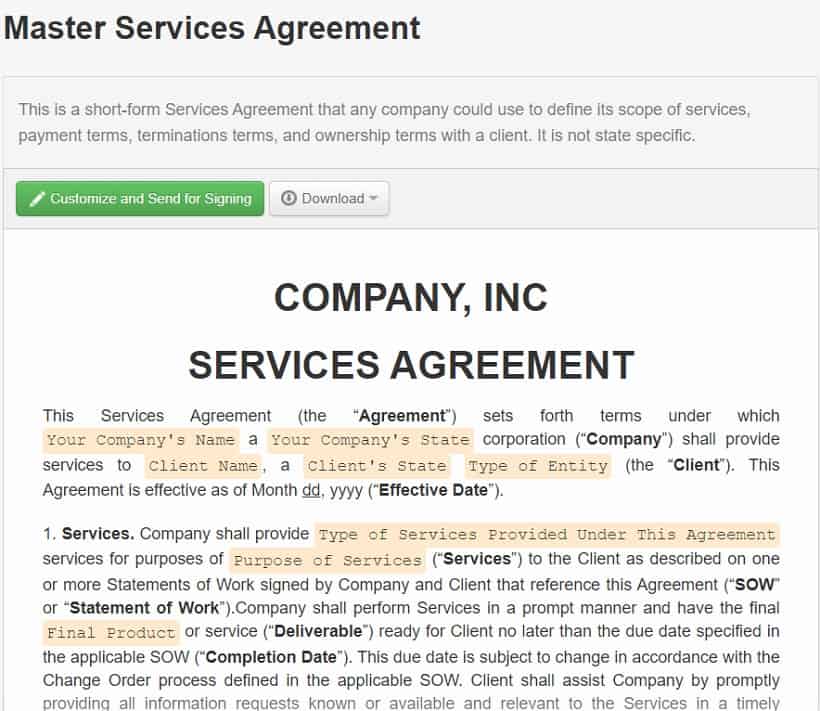
7. Build a Sustainable Business
Once you’ve closed the deal, your business development efforts shouldn’t stop. Existing clients are by far the best source for future work. Referrals and retainers are two great ways to leverage existing relationships to build a sustainable business.
Getting Referrals
After you finish the project—or a few weeks in, if it’s a long-term project—ask your client for some feedback. How are they feeling about the project? Are they happy with the output and your style of work?
Assuming the client is happy, ask for a referral. This is typically most effective if you scout ahead on LinkedIn and pick a few specific people your client knows and to whom they can introduce you. Alternatively, consider asking for a written recommendation on LinkedIn.
Selling Retainers
For many clients, a complete project is just the start of the journey.
Websites need new content, conversion rate optimization, maintenance, and ongoing backups. Mobile apps need to support the latest devices. And pretty much any project under the sun needs some kind of update every once in a while.
Retainers can be an excellent way for freelancers to monetize these needs. For a monthly fee, you can provide ongoing updates, insure against maintenance issues with a support plan, or give analytics and performance advice.
While there are many ways to structure retainers, the most profitable retainer agreements offer productized services rather than chunks of your time.
Conclusion: Just Get Started
As we’ve seen, selling web design and development projects doesn’t have to be difficult. The real key is to just get started and to keep practicing.
If you follow the steps above, you’ll get the hang of it in no time.
